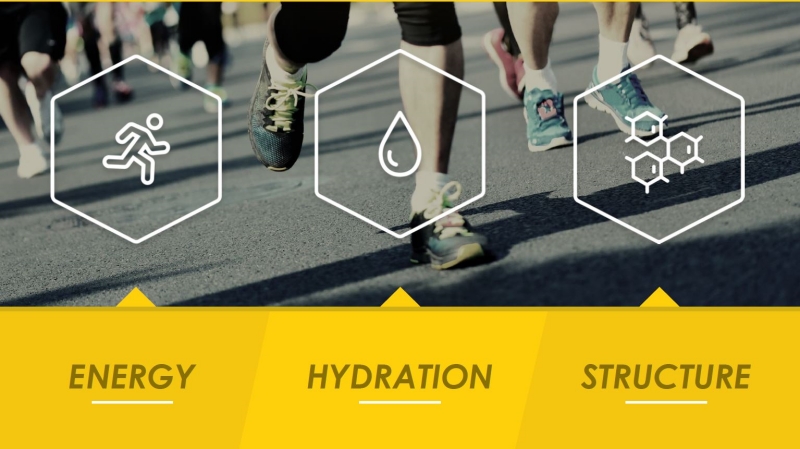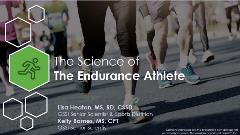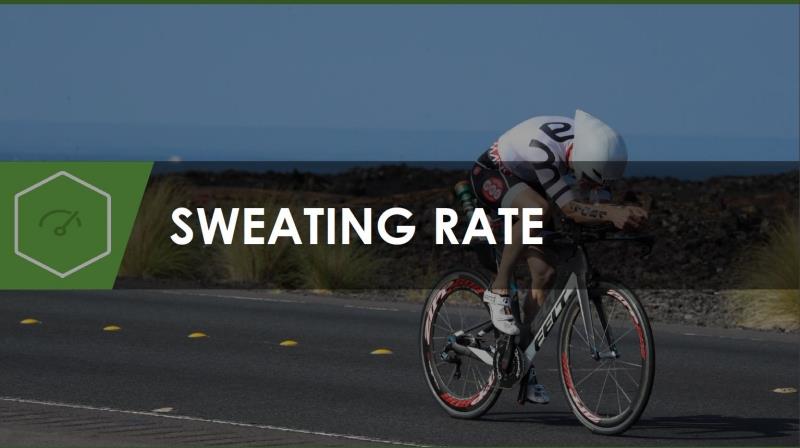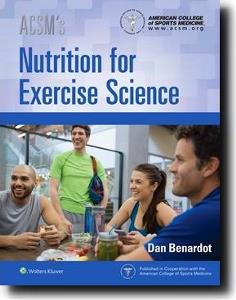Lisa Heaton, MS, RD, CSSD, and Kelly Barnes, MS |
Nov.
1, 2019

The Gatorade Sports Science Institute (GSSI) and ACSM recently hosted an industry-presented webinar with Lisa Heaton, MS, RD, CSSD, and Kelly Barnes, MS, entitled Fueling the Extra Mile: The Science of the Endurance Athlete.
Several questions were asked by attendees during the webinar and the answers pertaining to Exercise, Diets, and more are below.
Read the first half of the QnA here.

Key Points:
-
The sport nutrition needs for all athletes can be divided into 3 major categories: energy, hydration, and structure.
-
The body has an abundant storage of fats that can be used for fuel, but that is what the body turns to for the slower, less intense exercise.As exercise intensity increases, the body’s need for the fuel of carbohydrate increases; however this fuel storage is limited within the body.
-
The hydration needs of endurance athletes are unique, because as exercise intensity and duration increase, so do sweat losses — both fluid and electrolytes (specifically sodium, chloride, and potassium).To figure out sweat fluid losses, athletes should weigh themselves before and after exercise.Additional details on this testing and a calculator can be found at
https://www.gssiweb.org/toolbox/fluidLoss/calculator.
Q: What specific protein sources would you recommend for those who cannot have milk/dairy/whey due to lactose intolerance or whey due to gluten intolerant?
Gluten is a protein that is found within wheat, barley and rye. For those individuals, products that contain gluten should be avoided. It is always important to check food labels for hidden sources of gluten, even in recovery products. For those with lactose intolerance, there are several lactose-free dairy products available at the grocery store. These products will contain the milk protein, but do not contain lactose. Please note there is a difference between lactose intolerance and a dairy allergy. For those that have an allergy to dairy, soy-based products are a complete protein option that will provide all of the essential amino acids the body cannot make, though the leucine content is just not quite as high as in whey/milk. That does not mean that the athlete will not receive a benefit though. There are also blends of various incomplete protein sources (missing or low in certain essential amino acids) appearing on the market that theoretically provide all the essential amino acids once combined. Currently, there is little research validating this theoretical assumption but hopefully in the future we will start to see that emerge. In terms of general diet, the only other plant-based protein that is complete is Quinoa. Otherwise, consuming a variety of plant-based foods (starchy and non-starchy vegetables, beans, legumes, etc.) throughout the day will support the necessary essential amino acid intake.
Q: Please explain the physiology behind beta-alanine... does it act as a base?
Beta-alanine acts as a hydrogen buffer during high intensity exercise; thus, helping to normalize pH.
Q: How is sweat rate calculated during swimming?
Sweating rate during swimming is calculated almost the same as during any other sport. The only difference is that we need to ask the athletes to be very diligent about not consuming water or urinating while swimming. We often have the athletes get into the water first, come out and towel dry as thoroughly as possible, then step on the scale for a pre-exercise body mass. Then when they are finished swimming, we ask them to towel dry in the same exact manner as they did pre-exercise prior to the post-exercise body mass.
Q: Why not any protein during his actual competition? His hx of GI upset? Why is having protein with "Jons" breakfast not ideal? I always thought slowing carb digestion a bit was preferred in endurance athletes.
Protein can slow gastric emptying and is not a primary source of fuel during exercise; therefore, it is better suited for after exercise. In the case study, Jon was consuming his breakfast less than 2 hours prior to his training session/race. The goal was to get the carbohydrate (glucose) into his body to allow it to be utilized as fuel as he started his training. We wanted to avoid slowing digestion prior to exercise to limit potential for GI issues when he started.
Q: What are electrolytes? What's in them?
Sodium, chloride and potassium are the electrolytes lost in the highest quantity in sweat and are the most important for replacement. For this reason, these electrolytes, along with others such as calcium, magnesium, and zinc, are often found in sport nutrition products.

Q: Regarding the 30g/60g/90g based on training duration, when was that intake supposed to occur?
These numbers all related to the quantities of carbohydrate that an athlete should consume during exercise. This intake should start just before or even at the start of exercise and should continue gradually for the duration of the exercise — ensuring the that quantity of carbohydrate is met. The athlete should test out the amount and timing that works best for them in training. Many athletes will split their hourly carbohydrate intake similarly to how they split fluid intake; e.g., every 20 minutes.
Q: Can you speak about sports drinks that have a higher potassium and lower sodium content?
Sodium is the electrolyte lost in the highest quantity in sweat and should be the focus for replacement. Beverages with higher levels of other electrolytes can help with fluid retention, but not sodium replacement, and can be used when sodium losses are lower, exercise duration is shorter, or there is ample time between exercise sessions to replace electrolytes through food.
Q: If an athlete is going to train for 2-3 hours, do they start eating carbohydrate after the first 30 minutes, or after the first hour?
When an athlete is planning to train for that extended duration, they should be consuming carbohydrate in the hours leading up to training and all throughout training. There is no need to wait to start consuming. The athlete should consider the small amount of carbohydrate they take in in the hour prior to training as the “start” of their fueling. This carbohydrate will not be stored as glycogen; rather, it will still be circulating in the blood stream as glucose and can be pulled in by working muscles as a fuel source.
Q: The example persona had an ideal weight. In general, how would the nutrition plan change if he were overweight?
Again, this would depend on the goal of the exercise. If the goal of the exercise is performance, then an overweight person would have the same recommendations as an ideal weight person.
Q: What is your suggestion for the athlete not losing weight pre/post workout but having cramping issues?
Exercise-associated muscle cramping can be caused by a few different factors. Some may be related to dehydration, some to electrolyte imbalance, and some to neuromuscular fatigue. If this same athlete is hydrating properly, but still cramping, do you see white (salt) residue on their skin or clothing after exercise? The addition of electrolytes to the sport nutrition plan may help. However, if the cause is neuromuscular fatigue, then proper hydration and electrolyte replacement may cause less cramping but will not eliminate it.
Q: There's more data coming out that acknowledges the differences between men and women and I'm wondering why these differences weren't presented or if you can talk about those. For example, the glycogen turnover difference and how that affects the carb intake. Or the digestion of fructose difference between men and women (women don’t digest as well and are more likely to get GI distress from fructose such as Gu).
The research in this area is still fairly novel and we did not have time to cover it within the session. Many endurance-based studies have been conducted in men because undertaking a controlled research study with women has posed a challenge based upon hormone changes during the menstrual cycle. Fortunately, there are researchers who are attempting to answer these questions.
Q: Can you debunk the carb load myth....carb load the day before? Is this beneficial or is it 2 days before?
Athletes do not need to go crazy overconsuming carbohydrates the night before competition. Their routine carbohydrate intake should be about 7-10 g of carbohydrate per kilogram body weight per day.
Q: General recommendation for appropriate foods (specific meats, veggies, etc.) to meet carbohydrate and protein consumption recommendations?
The last few slides of the webinar address this question in detail.
Q: Do we know if 20g of protein following exercise is just as applicable to young athletes? Why is 24g of protein the amount that is recommended to consume per serving? If an athlete consumed more than that would this not be digested?
All protein consumed will be digested; however, the human body does not store excess protein beyond what can be used at a given moment (e.g., muscle protein synthesis, hormone production) and will be de-aminated and oxidized for energy. The timing of protein intake intervals, type of protein, and the size/type of athlete will dictate how much can be absorbed and used. It is recommended that the athlete consume protein at regular intervals throughout the day to maximize the opportunities for the body to use the protein. Around 20 grams is a good amount post-exercise for most athletes; however, recent research has teased out the amount of 0.25-0.3g/kg protein and can allow the athlete to tailor intake further.
In terms of daily protein intake, the amount can range anywhere from 1.2-2.0 g/kg (potentially more if the athlete is attempting to lose weight) and should depend upon the individual athlete’s needs. Once calculated, the total protein intake could be broken down between 4-6 meals/snacks to maximize the utilization of the protein.
Q: How do we do a sweat analysis?
The hydration needs of endurance athletes are unique, because as exercise intensity and duration increase, so do sweat losses — both fluid and electrolytes (specifically sodium, chloride, and potassium). To figure out sweat fluid losses, athletes should weigh themselves before and after exercise. Additional details on this testing and a calculator can be found at https://www.gssiweb.org/toolbox/fluidLoss/calculator.
View More Popular Nutrition Content

Free Sample Download - ACSM's Nutrition for Exercise Science

Nutrition Intuition: Moving Away from Dieting Practices

Nutrition and the Exercise Professional’s Scope of Practice